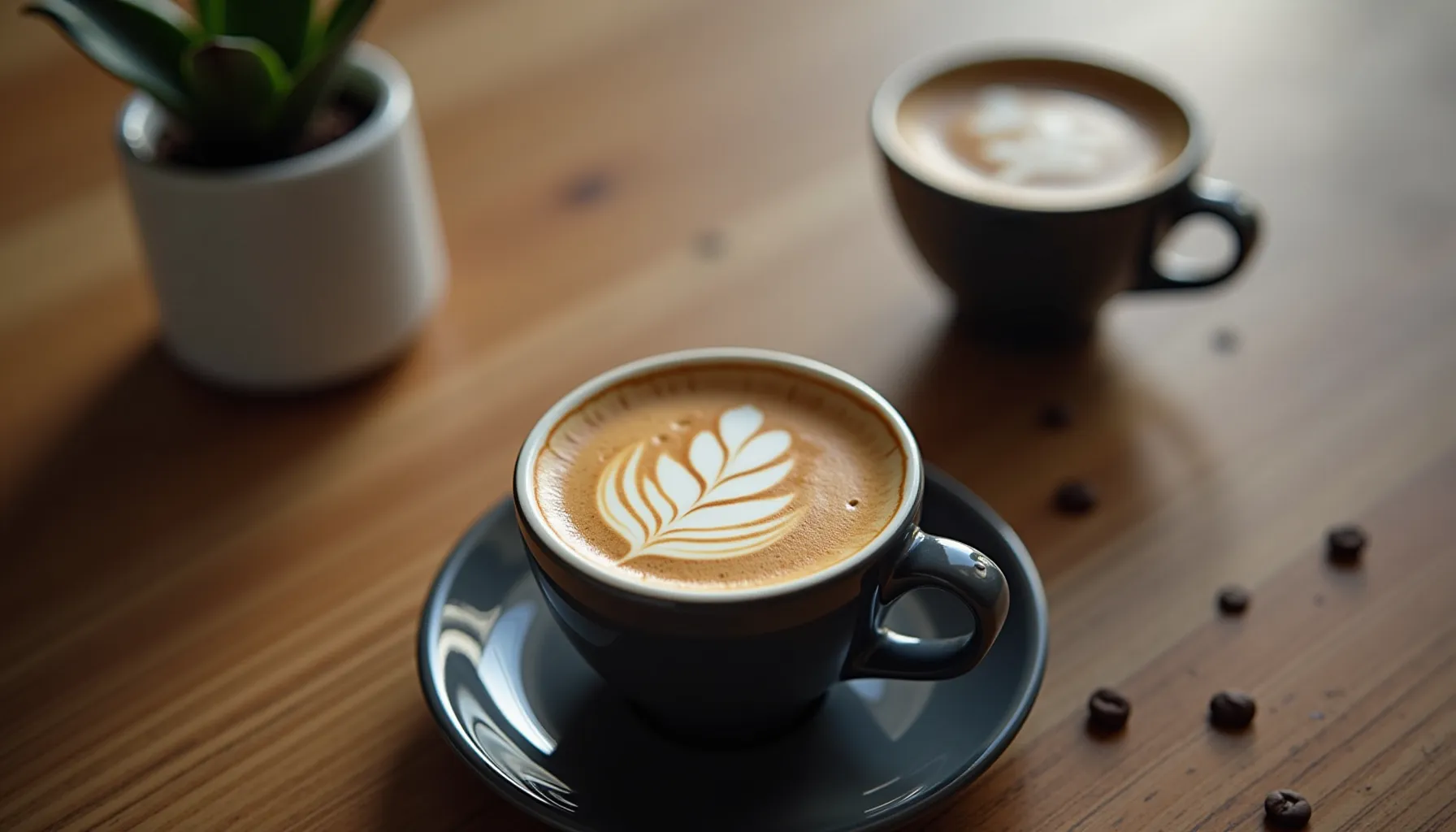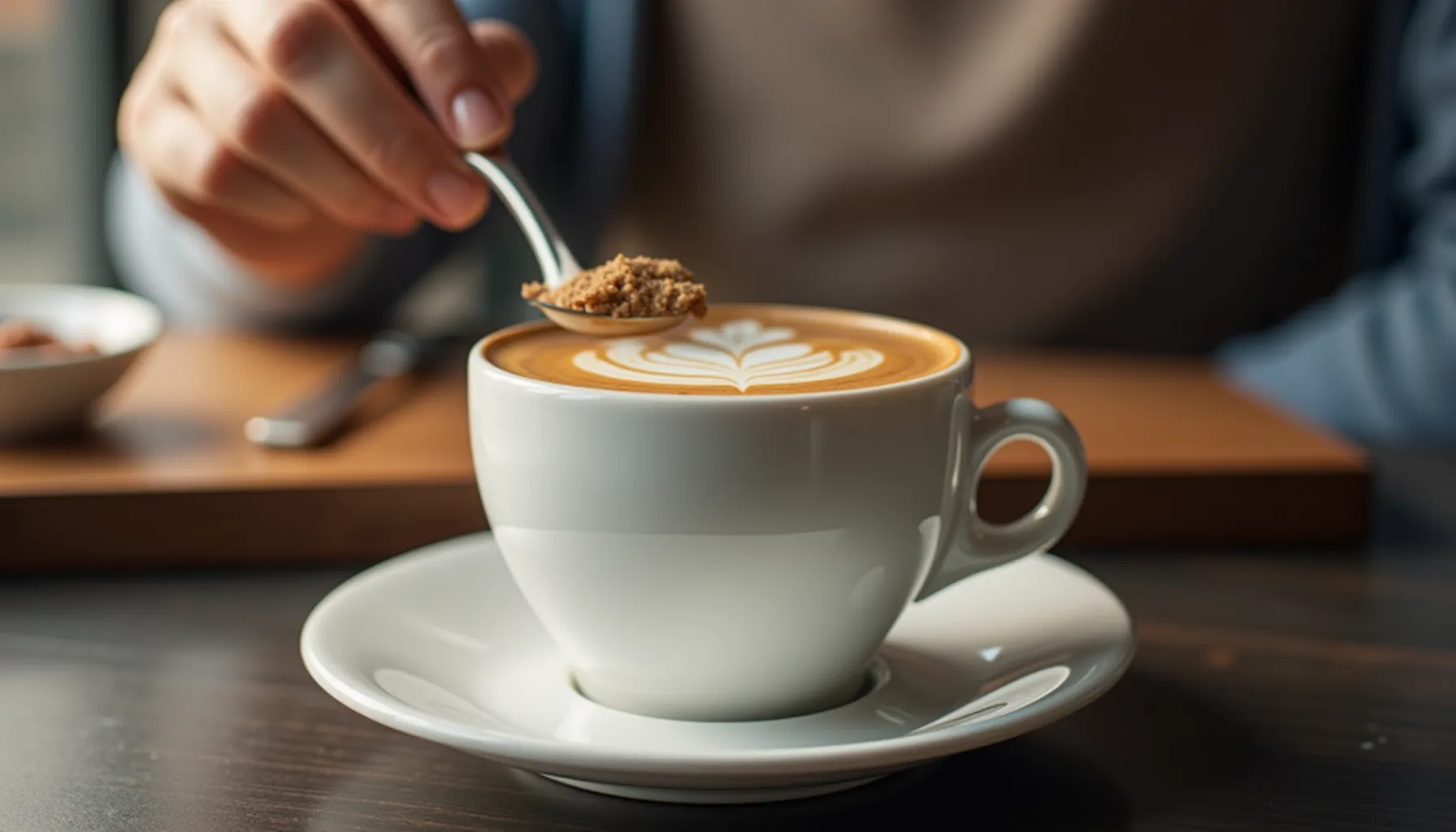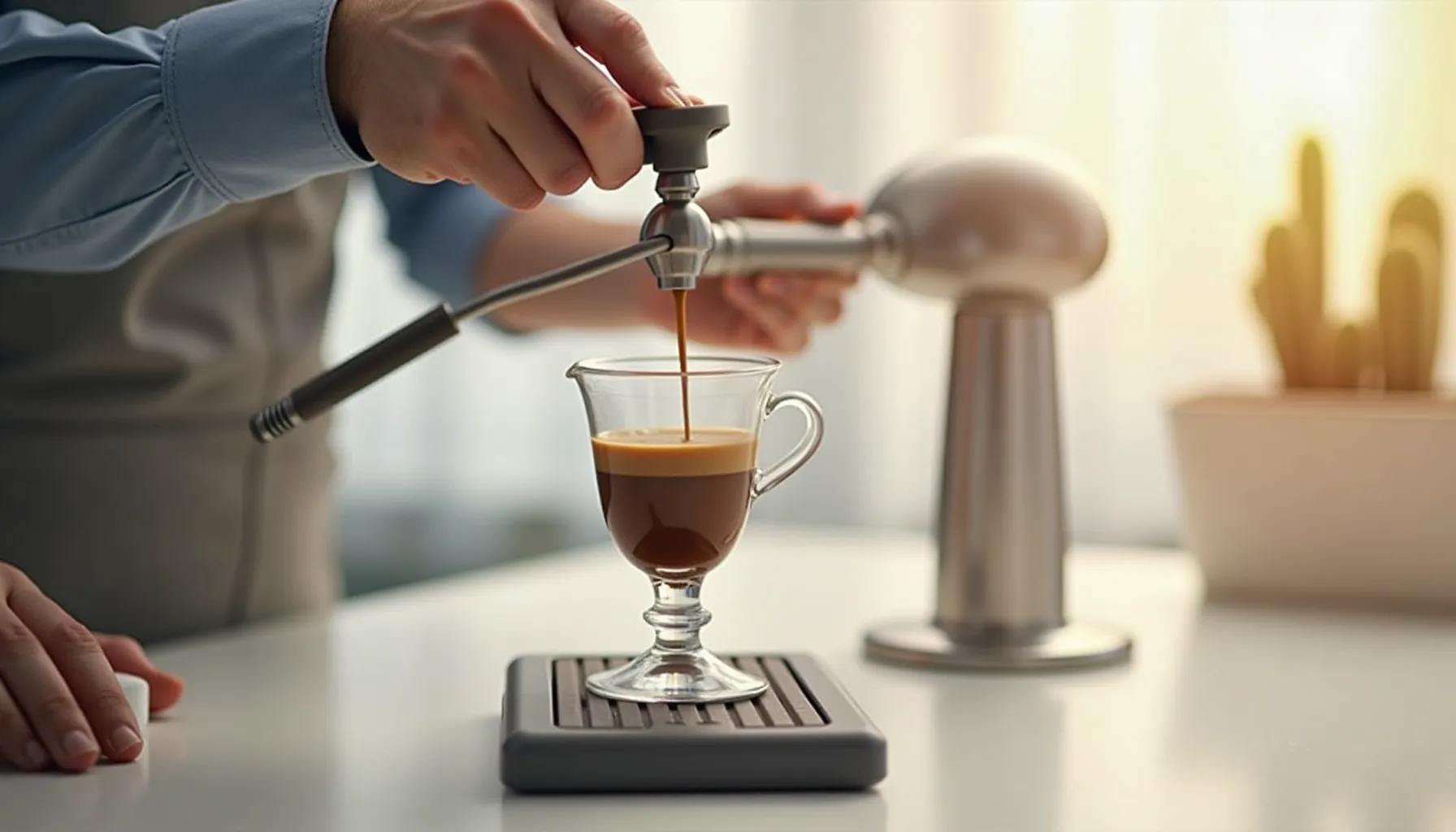The Art of Turkish Coffee: Mastering the Cezve for Perfect Brews
The Turkish coffee pot, known as a cezve or ibrik, is more than just a vessel for brewing coffee—it's a gateway to centuries of tradition and cultural richness. As I delved into the world of Turkish coffee, I discovered that this unassuming pot holds the secret to creating a brew that's unlike anything you've tasted before.
Whether you're a coffee aficionado or simply curious about different brewing methods, understanding the nuances of the Turkish coffee pot can elevate your coffee experience to new heights. In this article, we'll explore the art of selecting, using, and mastering the cezve to create the perfect cup of Turkish coffee.
From the traditional copper designs to modern adaptations, we'll uncover how different materials and styles impact your brew. You'll learn about the importance of fine grinding, the slow-heat technique, and the coveted foam that crowns a well-made Turkish coffee. We'll also delve into the cultural significance and serving rituals that make Turkish coffee a truly unique experience.
Key Takeaways:
- Understanding the Turkish coffee pot (cezve) and its crucial role in brewing
- Choosing the right materials and design for your brewing needs
- Mastering the art of fine grinding and slow heating for perfect Turkish coffee
- Learning the step-by-step brewing process to achieve the ideal foam and flavor
- Exploring Turkish coffee culture and traditional serving etiquette

Understanding the Turkish Coffee Pot (Cezve)
The cezve, the heart of Turkish coffee brewing, is a small pot with a unique design that's crucial for creating the perfect cup. Its distinctive shape, with a wide bottom tapering to a narrow top, isn't just for show—it's engineered for optimal brewing.
Traditional vs. Modern Designs
Traditional cezves are often hand-crafted, featuring intricate designs that reflect Turkish artistry. These pots typically have a long handle for easy maneuverability over heat sources. Modern versions, while maintaining the essential shape, may incorporate contemporary materials and sleek designs to suit various kitchen aesthetics.
Materials and Their Impact on Brewing
The material of your cezve can significantly influence your coffee's taste and brewing process. Let's explore the most common options:
Copper: The Classic Choice
Copper cezves are prized for their excellent heat conductivity. They heat quickly and evenly, allowing for precise temperature control—crucial for developing that signature foam. The downside? They require more maintenance to prevent tarnishing.
Stainless Steel: Durability Meets Tradition
Stainless steel pots offer a modern twist on the classic cezve. They're durable, easy to clean, and resist corrosion. While they may not conduct heat as efficiently as copper, they're a practical choice for everyday use.
Ceramic and Other Alternatives
Ceramic cezves provide excellent heat retention, keeping your coffee warm longer. They're also aesthetically pleasing but can be more fragile. Other materials like brass or even silver are sometimes used, each offering unique brewing characteristics.
Choosing the Right Turkish Coffee Pot
Selecting the perfect cezve is more than just picking a pretty pot. It's about finding the right fit for your brewing style and needs. Let's break down the key factors to consider:
Size Considerations
Cezves come in various sizes, typically ranging from single-serving to larger pots that can brew up to six cups. Consider how many people you'll usually be serving. Remember, Turkish coffee is served in small quantities, so a "cup" here is much smaller than your average mug.
Heat Source Compatibility
Your chosen brewing method will influence your pot selection. Traditional copper pots work well on gas stoves but aren't suitable for induction cooktops. If you're using an electric stove or induction cooktop, look for cezves specifically designed for these heat sources.
Maintenance and Care Tips
Proper care ensures your cezve lasts for years. Copper pots require regular polishing to maintain their luster. Stainless steel is low-maintenance but may need occasional descaling. Ceramic pots should be handled with care to prevent chips or cracks. Always hand wash your cezve to preserve its integrity.
Essential Ingredients for Authentic Turkish Coffee
Creating the perfect cup of Turkish coffee isn't just about the pot—it's also about what goes into it. Let's explore the key ingredients that make Turkish coffee so unique:
Selecting the Perfect Coffee Beans
The foundation of great Turkish coffee lies in the beans. Traditionally, Arabica beans are preferred for their rich flavor profile. Look for medium to dark roasts that offer a balance of bitterness and acidity. Some popular choices include Brazilian or Ethiopian beans, known for their smooth, slightly sweet notes.
The Art of Fine Grinding
Turkish coffee demands an ultra-fine grind—finer than espresso. The coffee should feel like powder between your fingers. This fine grind allows for maximum flavor extraction and creates the thick, rich texture Turkish coffee is known for. Invest in a quality grinder capable of achieving this consistency, or look for pre-ground Turkish coffee.
Water Quality and Its Influence
Don't overlook the importance of water in your brew. Use filtered or spring water for the best results. The mineral content in your water can significantly affect the taste of your coffee. Soft water tends to produce a smoother cup, while hard water can enhance bitterness.
Step-by-Step Turkish Coffee Brewing Guide
Brewing Turkish coffee is an art form that requires patience and precision. Let's dive into the process that'll have you crafting the perfect cup in no time.
Measuring and Mixing
Start by adding cold water to your cezve. For each cup, use about 3 ounces of water. Next, add 2 heaping teaspoons of finely ground coffee per cup. If you prefer sweetness, now's the time to add sugar. Don't stir yet – let the coffee float on top of the water.
The Slow Heat Technique
Place your cezve on low heat. Patience is key here. Slowly heating the coffee allows the flavors to develop fully and creates that signature foam. As the coffee heats, you'll notice it starting to sink and mix with the water.
Achieving the Perfect Foam
The foam, or "crema," is the hallmark of a well-made Turkish coffee. Here's how to get it just right:
First Boil and Foam Distribution
As the coffee nears boiling, a dark foam will form on top. Just before it boils, remove the cezve from heat and carefully spoon some of this foam into your coffee cups. This ensures each cup gets an equal share of the prized foam.
Second Boil and Final Pour
Return the cezve to the heat. Let it come to a near boil again, then remove it from heat. Pour the coffee slowly into the cups, making sure to distribute any remaining foam evenly. The result? A rich, velvety coffee with a luxurious layer of foam on top.
Serving and Enjoying Turkish Coffee
Turkish coffee isn't just a drink; it's an experience. The way you serve and enjoy it is just as important as how you brew it. Let's explore the rituals and traditions that make Turkish coffee truly special.
Traditional Serving Etiquette
In Turkish culture, coffee is served with great ceremony. Always offer the eldest or most respected person first. The coffee is typically served on a tray, accompanied by a glass of water. This water is meant to be sipped before the coffee to cleanse the palate. Remember, don't stir the coffee once it's in the cup – the grounds are meant to settle at the bottom.
Pairing with Turkish Delights and Sweets
Turkish coffee is often served with something sweet on the side. Traditional choices include lokum (Turkish delight) or a piece of dark chocolate. The sweetness complements the coffee's robust flavor beautifully. Some people even dip their Turkish delight into the coffee for an extra treat.
Reading Coffee Grounds: A Cultural Practice
Once you've finished your coffee, you might participate in the age-old tradition of tasseography – reading the coffee grounds. Turn your cup upside down on the saucer and let it cool. The patterns formed by the grounds are said to reveal your fortune. It's a fun, social way to end your coffee experience, whether you believe in it or not!

Brewing Up a Legacy: Your Journey into Turkish Coffee Culture
As we've explored the intricacies of Turkish coffee, from selecting the perfect cezve to mastering the art of brewing, it's clear that this centuries-old tradition offers more than just a caffeine boost. It's a gateway to a rich cultural experience, inviting us to slow down and savor each sip.
The Turkish coffee pot, with its unique design and varied materials, stands as a testament to the evolution of coffee brewing. Whether you opt for a traditional copper cezve or a modern stainless steel version, each brew becomes a mini-ritual, connecting you to generations of coffee lovers before you.
Remember, perfecting your Turkish coffee technique takes time and patience. Embrace the process, experiment with different beans and grinds, and don't be afraid to make mistakes. Each cup is an opportunity to refine your skills and deepen your appreciation for this timeless beverage.
As you embark on your Turkish coffee journey, consider sharing this experience with friends and family. Invite them over for a traditional coffee serving, complete with sweet treats and perhaps even a playful attempt at reading the grounds. In doing so, you're not just brewing coffee; you're cultivating connections and creating lasting memories.
FAQ
What makes Turkish coffee unique compared to other brewing methods?
Turkish coffee stands out due to its ultra-fine grind, unfiltered brewing process, and the special pot (cezve) used. This method results in a strong, rich flavor with a distinctive foam on top, offering a completely different taste experience from drip or espresso coffee.
Can I make Turkish coffee without a traditional cezve?
While a cezve is ideal for authentic Turkish coffee, you can use a small saucepan as an alternative. However, achieving the perfect foam might be challenging. For the best results, investing in a proper Turkish coffee pot is recommended.
How fine should the coffee grounds be for Turkish coffee?
Turkish coffee requires an extremely fine grind, even finer than espresso. The grounds should feel like powder between your fingers. This fine consistency is crucial for proper extraction and creating the signature thick texture of Turkish coffee.
Is it necessary to add sugar while brewing Turkish coffee?
Adding sugar during brewing is traditional but not mandatory. You can prepare Turkish coffee without sugar (sade), with a little sugar (az şekerli), medium sugar (orta şekerli), or very sweet (çok şekerli). It's a matter of personal preference.
What's the significance of the foam in Turkish coffee?
The foam, or crema, on Turkish coffee is highly prized and considered a sign of a well-made brew. It contributes to the coffee's rich flavor and smooth texture. Achieving a thick, unbroken layer of foam is often seen as a mark of skill in preparing Turkish coffee.












